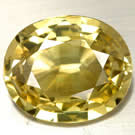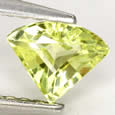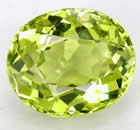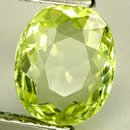What's Special About Chrysoberyl Gemstones?
Chrysoberyl is often considered one of the most underrated gemstones, while tanzanite, somewhat unfairly, is frequently labeled as the most overrated. Despite being a rare gem with remarkable qualities, chrysoberyl remains largely unknown, so much so that even many gem dealers don't carry it in their inventory. Discover our collection of loose chrysoberyl for sale.

 Despite its name, chrysoberyl is not part of the beryl family. While beryls like emerald, aquamarine, golden beryl, and morganite are aluminum beryllium silicates, gemstone chrysoberyl is actually beryllium aluminum oxide. However, the chrysoberyl species boasts some exceptionally rare and remarkable members. It includes two particularly rare gemstones: alexandrite, known for its color-changing properties, and chrysoberyl cat's eye, the original "cat's eye" gemstone. The term "cat's eye" specifically refers to chrysoberyl, while other gemstones exhibiting the cat's eye effect are identified by an additional name, such as "cat's eye apatite."
Despite its name, chrysoberyl is not part of the beryl family. While beryls like emerald, aquamarine, golden beryl, and morganite are aluminum beryllium silicates, gemstone chrysoberyl is actually beryllium aluminum oxide. However, the chrysoberyl species boasts some exceptionally rare and remarkable members. It includes two particularly rare gemstones: alexandrite, known for its color-changing properties, and chrysoberyl cat's eye, the original "cat's eye" gemstone. The term "cat's eye" specifically refers to chrysoberyl, while other gemstones exhibiting the cat's eye effect are identified by an additional name, such as "cat's eye apatite."
 What sets chrysoberyl apart? Firstly, it boasts exceptional hardness, scoring an impressive 8.5 on Mohs gemstone hardness scale, surpassed only by ruby, sapphire, and diamond. Additionally, chrysoberyl showcases a high refractive index, offering outstanding brilliance comparable to ruby and sapphire. Its vitreous luster and the availability of clean, transparent specimens further enhance its appeal. Remarkably, chrysoberyl remains untreated and is surprisingly affordable, largely due to its understated presence in the gemstone market.
What sets chrysoberyl apart? Firstly, it boasts exceptional hardness, scoring an impressive 8.5 on Mohs gemstone hardness scale, surpassed only by ruby, sapphire, and diamond. Additionally, chrysoberyl showcases a high refractive index, offering outstanding brilliance comparable to ruby and sapphire. Its vitreous luster and the availability of clean, transparent specimens further enhance its appeal. Remarkably, chrysoberyl remains untreated and is surprisingly affordable, largely due to its understated presence in the gemstone market.
Chrysoberyl was first discovered in 1789, and was described and named by famous German geologist, Abraham Gottlob Werner. Chrysoberyl is normally yellow, yellow-green, or brownish. Its color is caused by the presence of iron. Chrysoberyl became a popular gemstone for jewelry during Victorian and Edwardian times, but its popularity declined as the gem became scarcer.
 In gemstone lore, chrysoberyl is associated with discipline and self-control. It is said to promote concentration and the ability to learn. Additionally, it is thought to help the wearer strive for excellence. Chrysoberyl is also said to bring peace of mind, clearer thinking and increased self-confidence.
In gemstone lore, chrysoberyl is associated with discipline and self-control. It is said to promote concentration and the ability to learn. Additionally, it is thought to help the wearer strive for excellence. Chrysoberyl is also said to bring peace of mind, clearer thinking and increased self-confidence.
 Chrysoberyl deposits are found in Brazil, Madagascar, Myanmar (Burma), Pakistan, Russia, United States and Zimbabwe. A great deal of the chrysoberyl gemstones that we see in Thailand are very fine materials from Pakistan.
Chrysoberyl deposits are found in Brazil, Madagascar, Myanmar (Burma), Pakistan, Russia, United States and Zimbabwe. A great deal of the chrysoberyl gemstones that we see in Thailand are very fine materials from Pakistan.
Fine faceted chrysoberyl is considered to be a suitable alternative to more expensive yellow sapphire (which is almost always heated), or less expensive peridot, citrine and yellow topaz.

